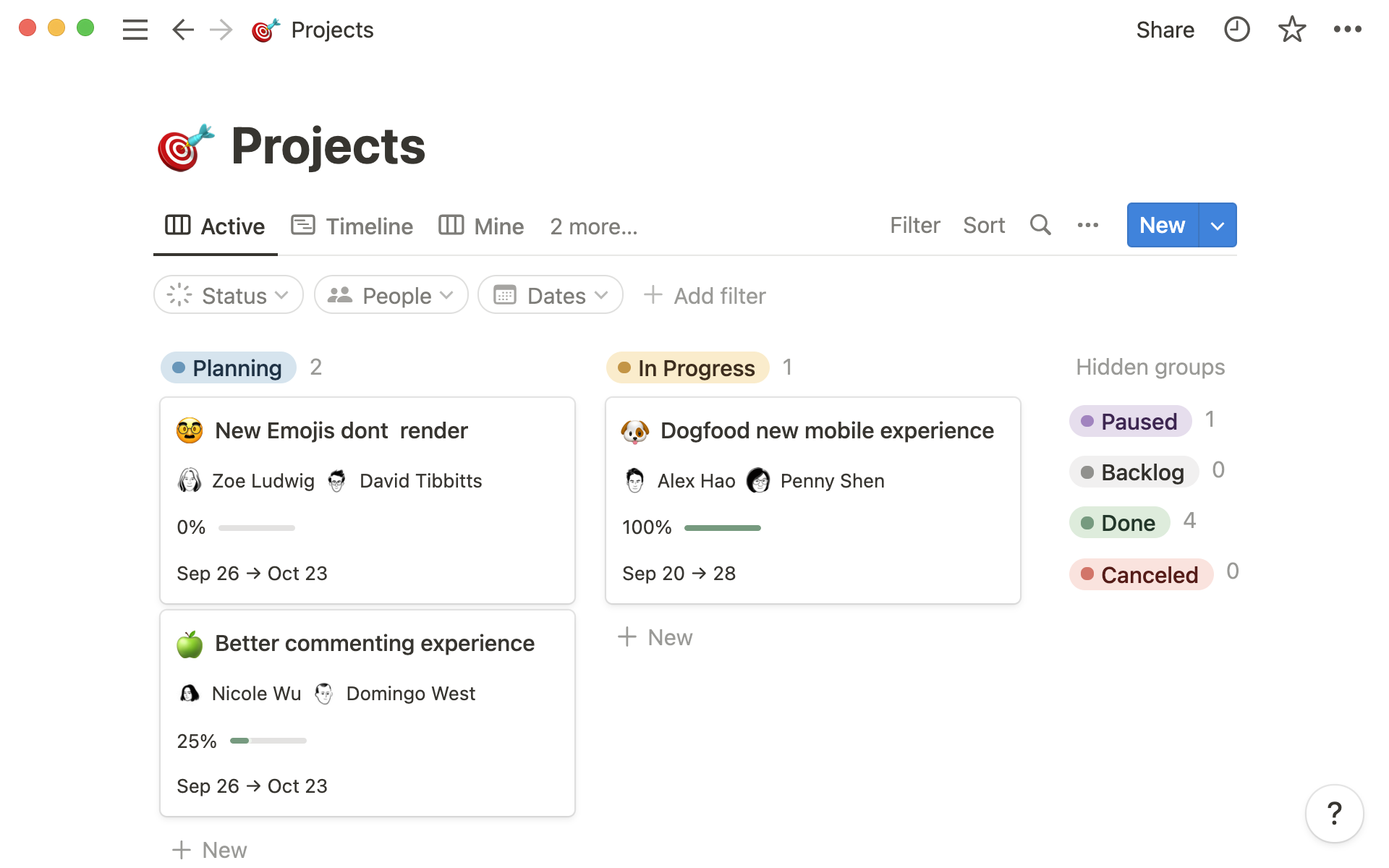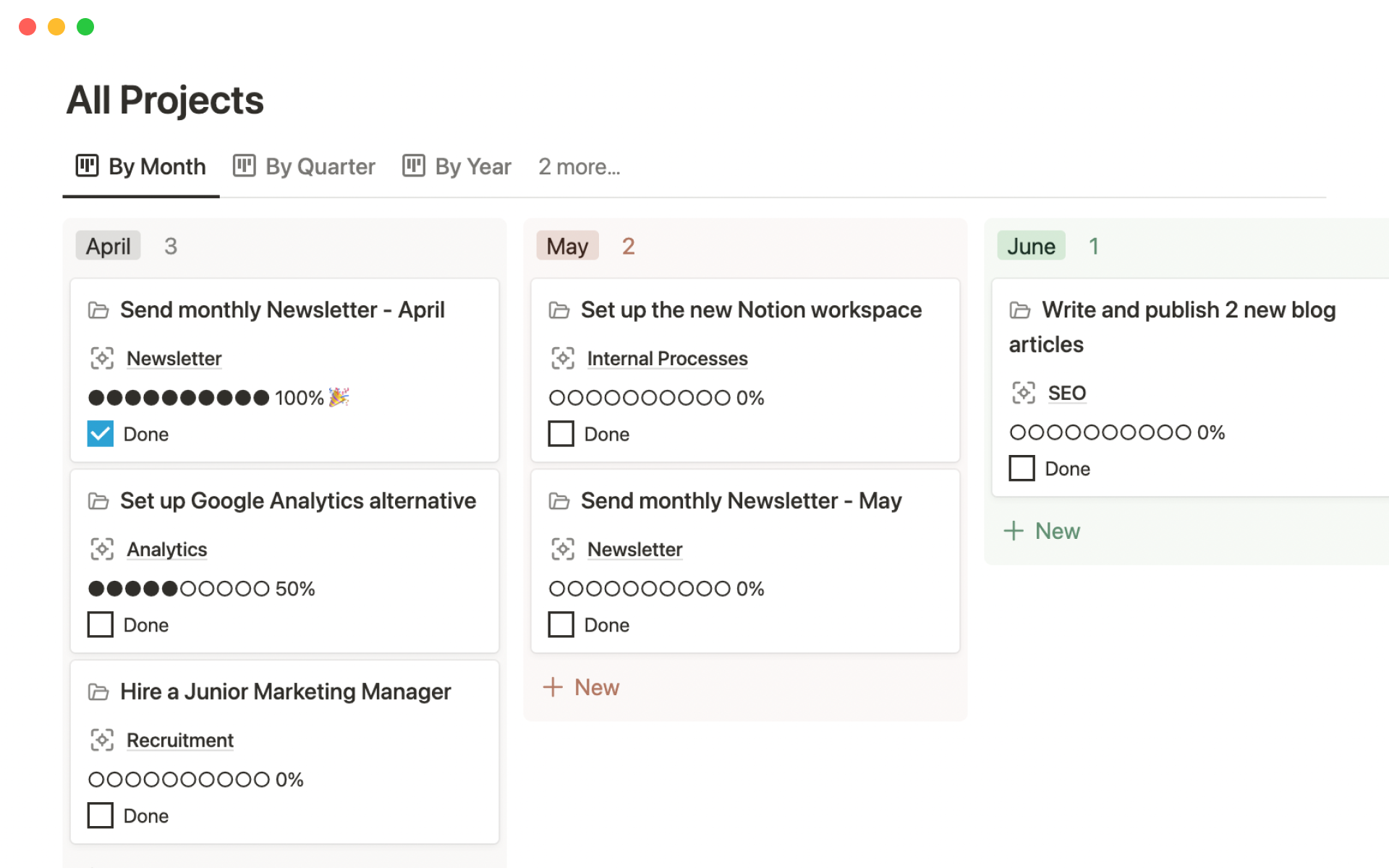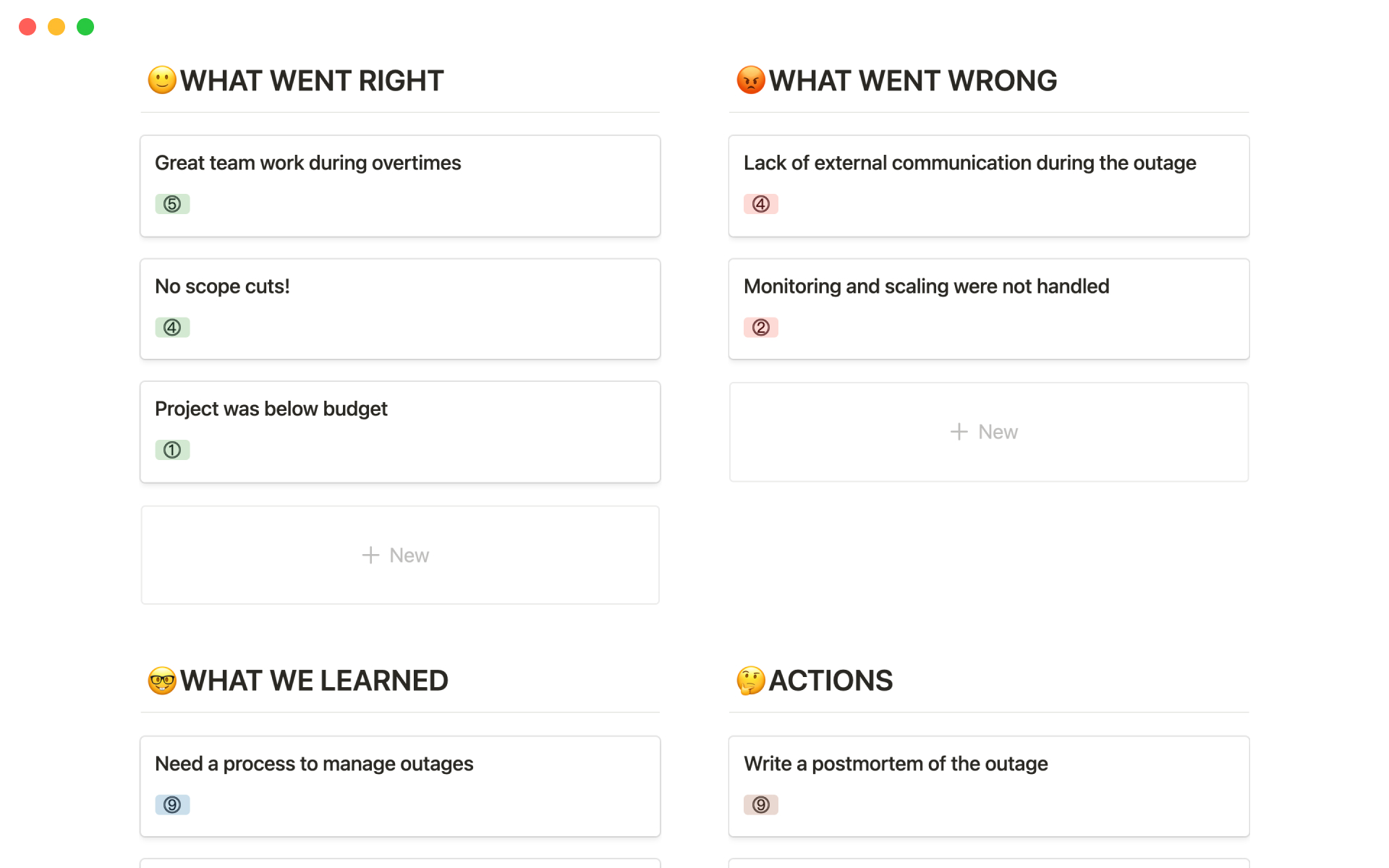Empower your Agile team to communicate in real time in a shared, centralized workspace.

Take advantage of Notion’s flexibility to iterate your Agile projects with ease
Agile management lets you adapt to changes more quickly and improves any project’s problem detection. It also strengthens team collaboration by letting team members own project components and know where to focus.
Notion empowers teams to manage complex projects and focus on continuously improving processes with agility — even with constantly changing requirements.

Supercharge your Agile project managementoduct/projects with Notion to:
Create and manage user stories, sprints, epics, and backlogs
Streamline information management with a fully connected workspace
Track and visualize project progress at a glance with our boards, timelines, and other views
Improve teamwork by increasing communication
Take advantage of our integrations with Agile project management tools to bring your Agile workflows into Notion

How to manage projects with the Agile methodology using Notion
Sign into Notion and create a new workspace.
In your new workspace, create a new database.
Populate the database with tasks and milestones. Add start and due dates and assign categories, statuses, and other properties.
Use custom properties to sort tasks by importance.
Share the workspace with your team members to make the most of our Agile project management software.


Streamline your project management workflow using Agile methods in Notion
Implement Agile methodology in your workspace to track your projects, risk assumptions, technical issues, and more.
FAQs
What are the 5 phases of Agile?
What are the 5 phases of Agile?
Agile management uses an iterative approach consisting of five key phases:
Concept — define the project vision, goals, and objectives
Inception — conduct a feasibility study, establish a high-level roadmap and project scope
Iteration or construction — incrementally develop and test the project
Release — package and deploy your final product
Production — maintain your product with updates and bug fixes
What is the difference between Agile and Scrum?
What is the difference between Agile and Scrum?
Agile is a project management methodology often used in software development that emphasizes flexibility, collaboration, and customer satisfaction.
Scrum is a specific framework within Agile that defines team members (like Scrum Master), specific events, and artifacts backlogs.
While Scrum is one of the most popular Agile frameworks, there are other frameworks like Kanban, Lean, and XP.
What are Agile project management’s 3 C's?
What are Agile project management’s 3 C's?
The 3 C's in Agile are the key elements of user story development, a technique used to capture Agile project requirements:
Card — a physical or digital card that captures user's story
Conversation — the discussion between product owners and development teams to clarify the user story details
Confirmation — the agreement between the product owner and the development team on the definition of “done”